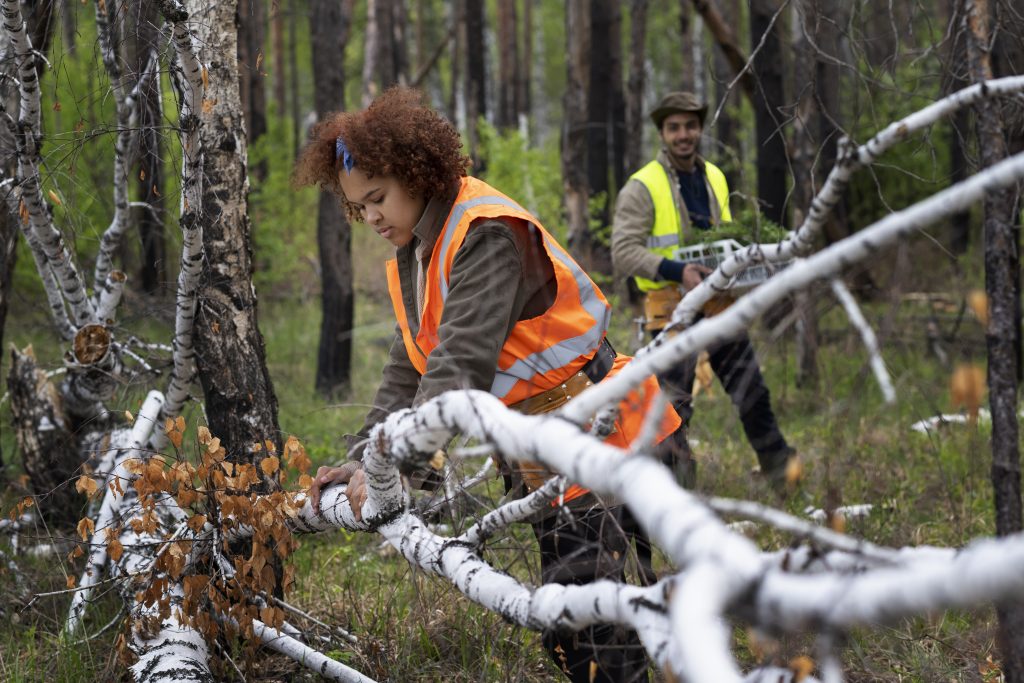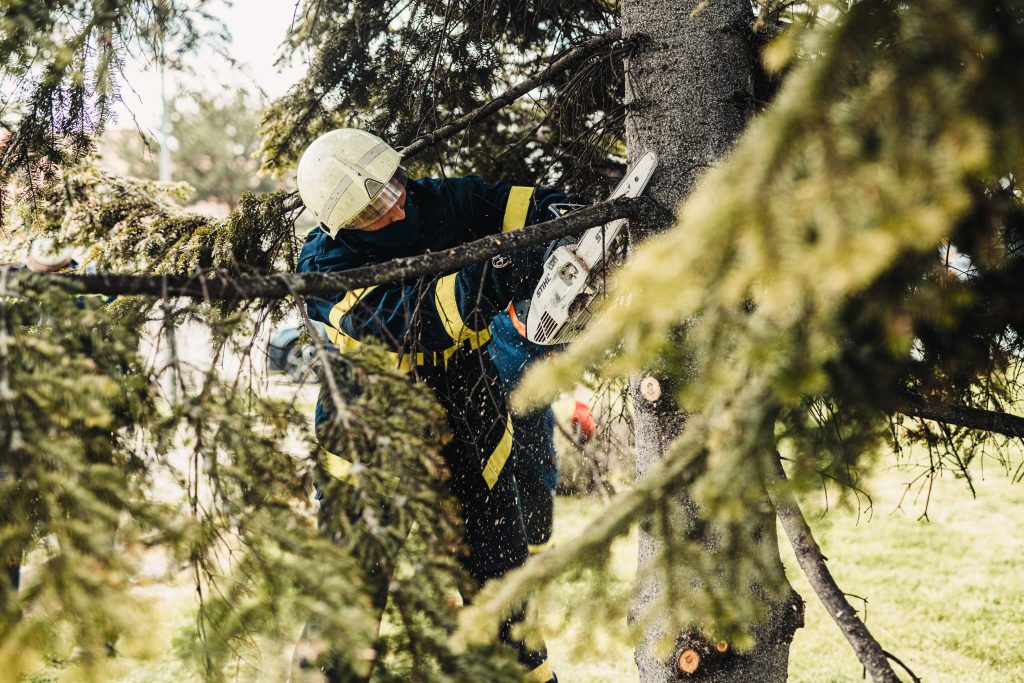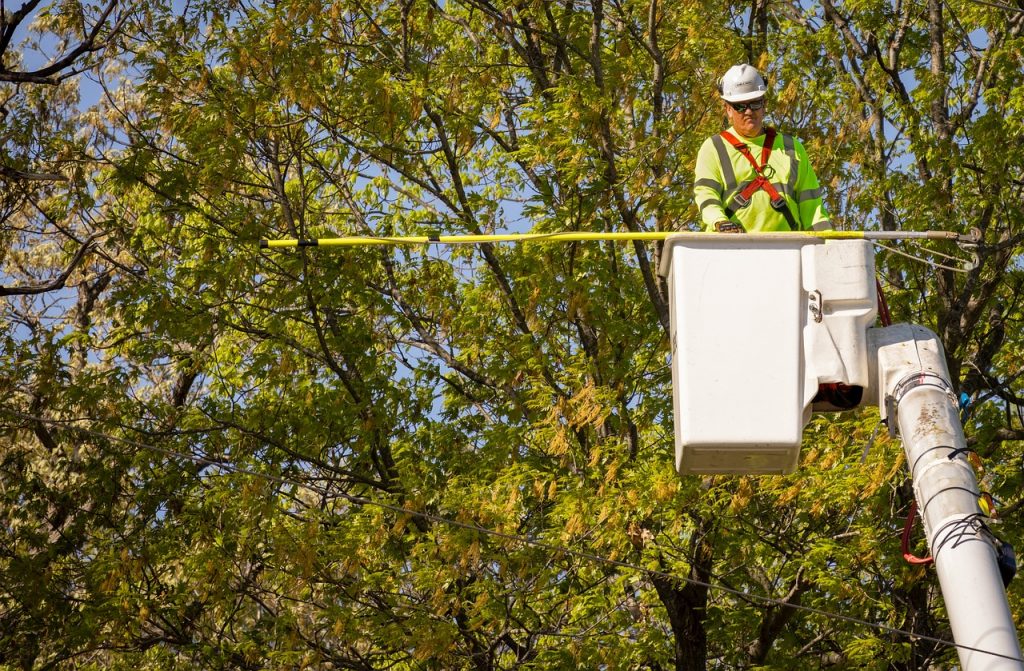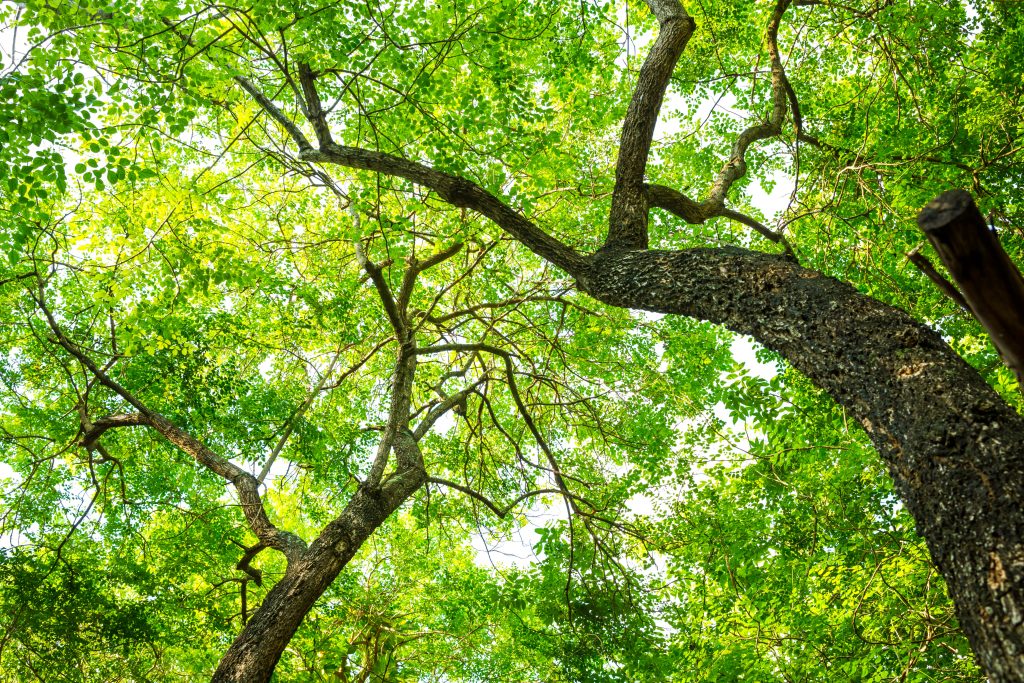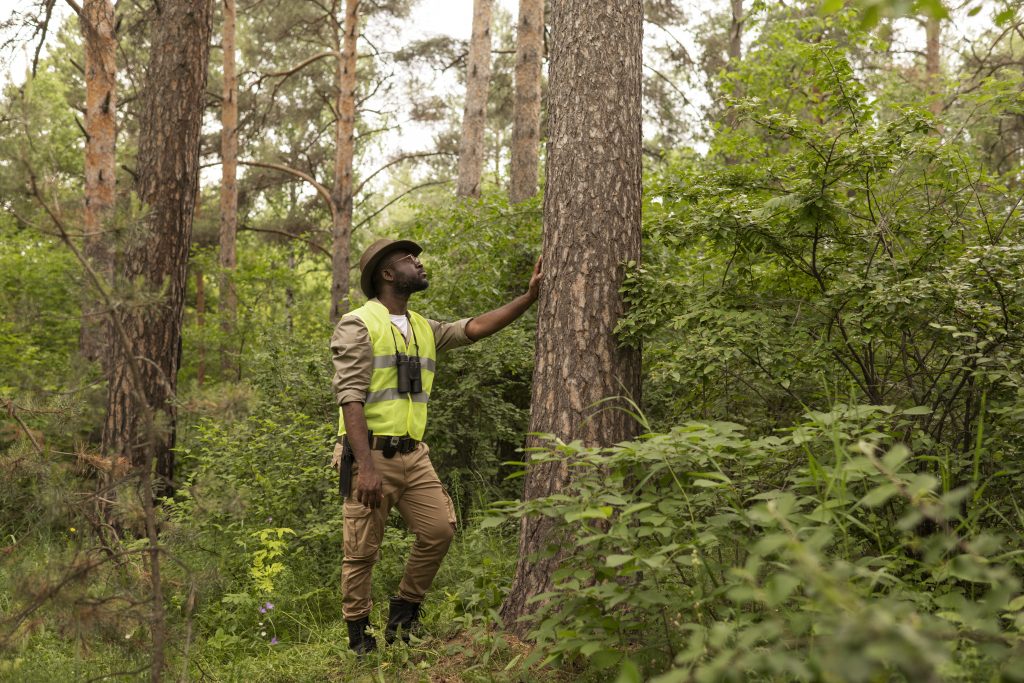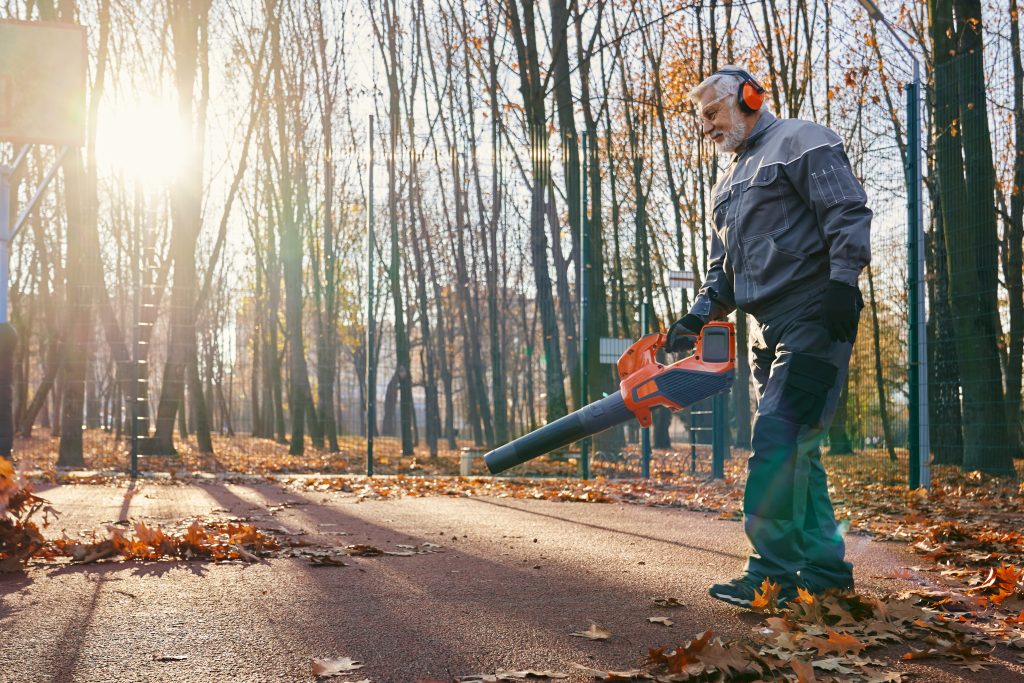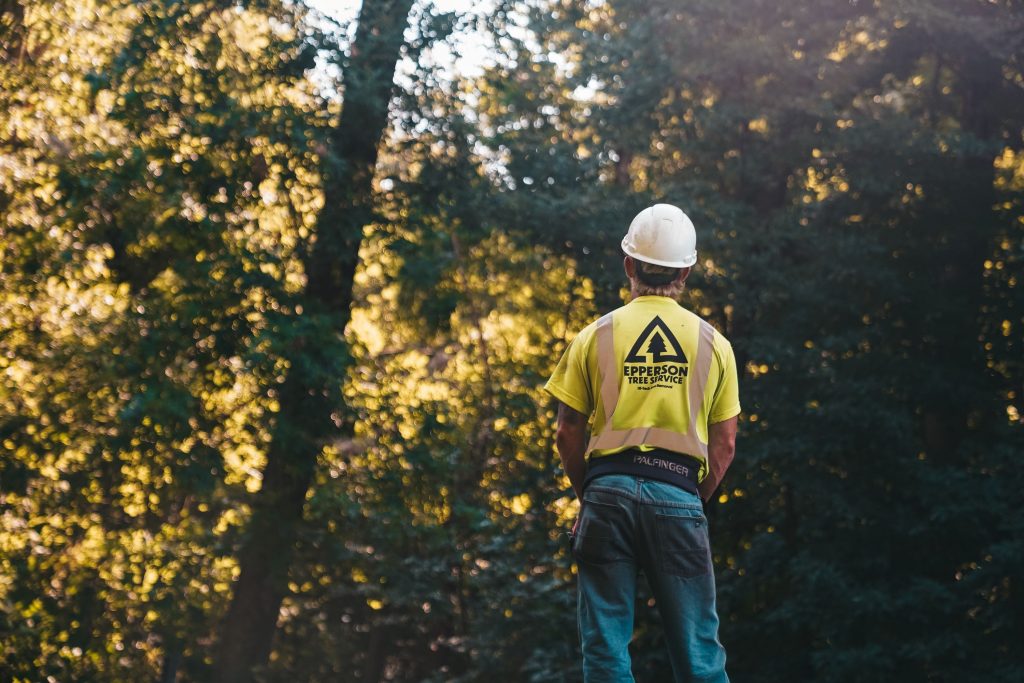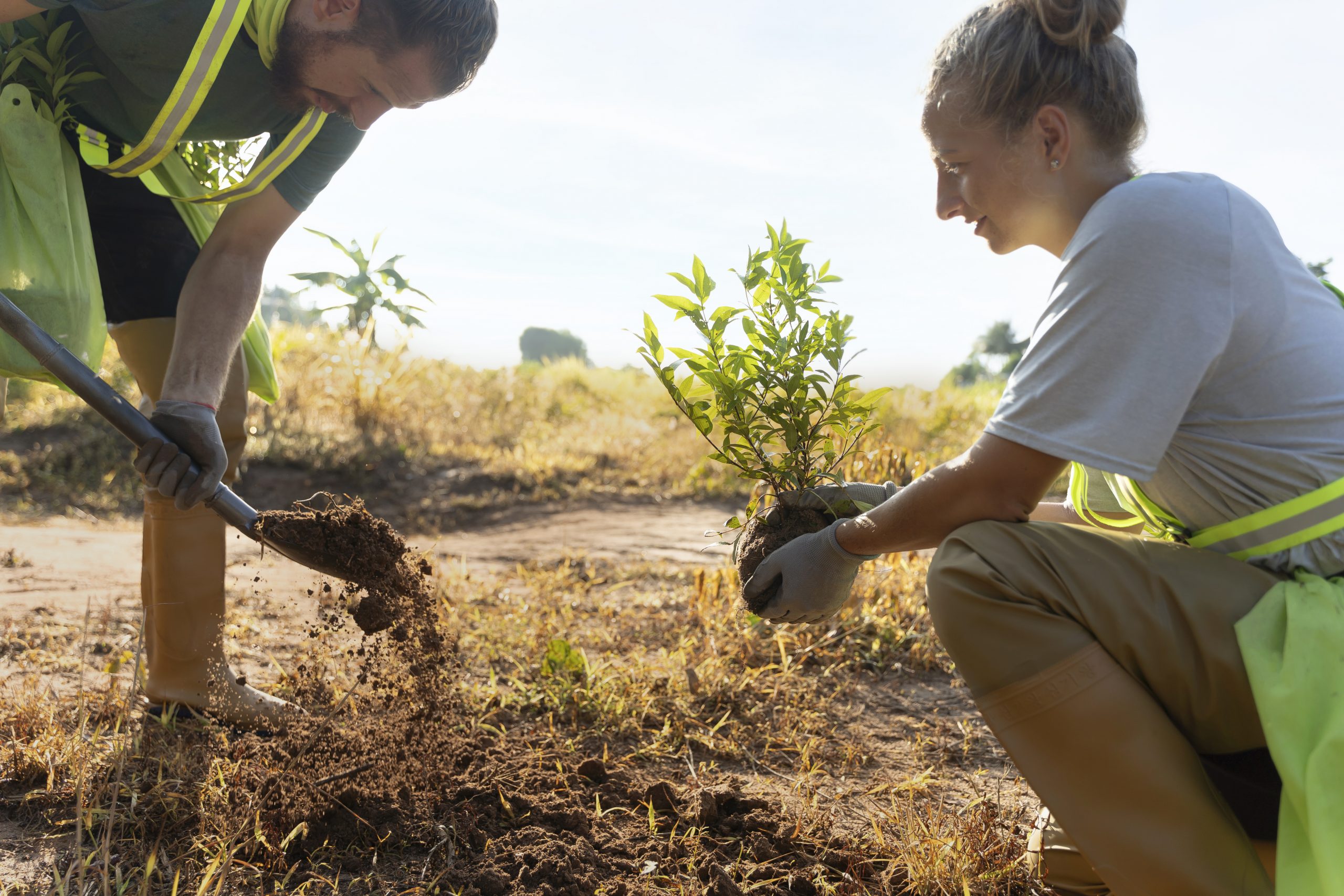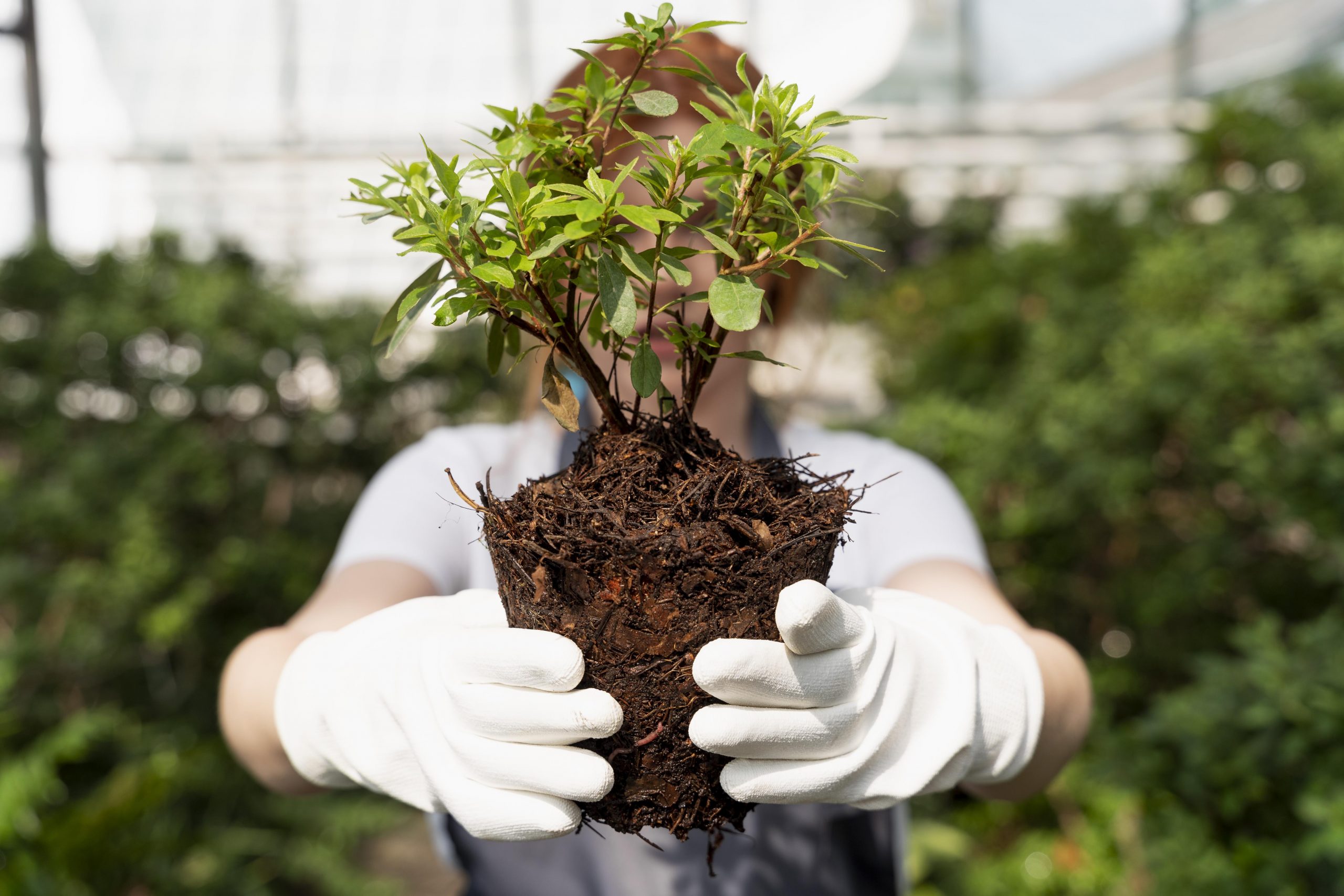How Much Is a Large Tree Removal?
How Much Is a Large Tree Removal?
Do you have a large tree that needs to be removed? Wondering how much it will cost? Look no further! In this article, we will delve into the world of tree removal costs and provide you with all the information you need. From the history of tree removal to tips for finding the right professionals, we’ve got you covered. We’ll also share the necessary steps for safe tree removal and highlight some common mistakes to avoid. So, let’s get started and demystify the cost of removing that large tree from your property.
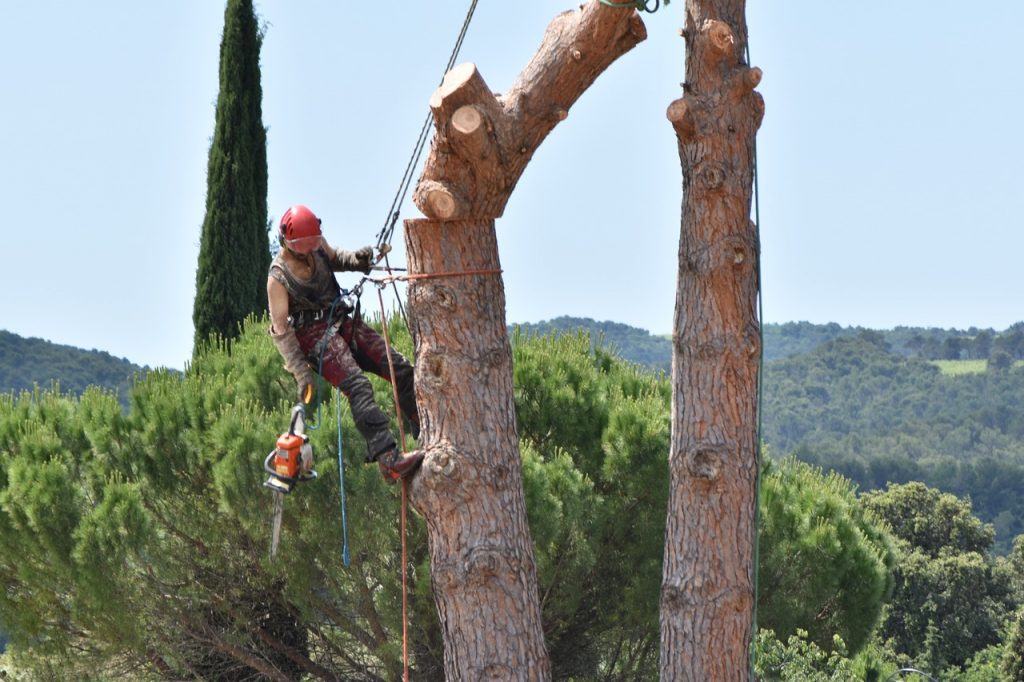
Key Takeaways
- The cost of tree removal is influenced by factors such as the size of the tree, its location, the complexity of the job, and any additional services required.
- Advancements in tree removal techniques and equipment have resulted from an increase in tree removal due to urbanization. Specialized tools like chainsaws and cranes are used, and techniques such as directional felling and sectional dismantling have been developed.
- When considering tree removal, it is important to evaluate the cost factors and risks involved, and to prioritize safety by following proper precautions. Professional arborists have the expertise and equipment for safe removal, and insurance coverage and expert advice should also be considered.
- Professional tree removal services possess experience, expertise, and specialized tools and equipment. They minimize the risk of damage to property and have training in proper tree cutting techniques.
Introduction to Tree Removal Costs
Tree removal costs can vary depending on the size and location of the tree. When considering tree removal prices, it’s important to understand the factors that contribute to the cost breakdown. Here are some key points to consider:
- Size of the tree: Larger trees require more equipment and manpower to remove, which can increase the cost.
- Location of the tree: If the tree is in a hard-to-reach area or close to buildings or power lines, additional precautions and specialized equipment may be needed, leading to higher costs.
- Complexity of the job: Some trees may have complex root systems or may need to be dismantled in sections to ensure safety. These factors can increase the time and effort required, impacting the overall price.
- Additional services: If you require stump removal or debris cleanup, these services will often be an additional cost.
Understanding these factors will help you estimate the cost of tree removal more accurately. Now that you have an idea of the pricing factors, let’s delve into the history of tree removal and how it has evolved over time.
Tree Removal History
Over the years, there’s been a significant increase in the number of trees being taken down. As our cities grow and expand, the need for tree removal becomes more evident. Tree removal techniques have evolved to accommodate this growing demand, ensuring that trees can be removed safely and efficiently.
Tree removal equipment plays a crucial role in this process. In the past, manual labor was the primary method used to bring down trees. However, with advancements in technology, specialized equipment such as chainsaws, cranes, and wood chippers have become essential tools for tree removal professionals. These machines enable them to remove trees of all sizes with precision and minimize the risk of accidents.
In addition to equipment, various techniques are employed to ensure effective and safe tree removal. These techniques include directional felling, which involves cutting the tree in a specific direction to control its fall, and sectional dismantling, where the tree is taken down in smaller sections. The choice of technique depends on factors such as the tree’s location, size, and surrounding structures.
Understanding the history and evolution of tree removal techniques and equipment provides valuable insight into the current practices used by arborists and tree removal experts. By staying informed about these advancements, you can make better decisions when it comes to tree removal on your property. Now, let’s move on to some helpful tips for tree removal.
Tips
When it comes to tree removal, there are several key points to consider: cost factors, DIY vs professional, and safety precautions. Understanding the cost factors involved in tree removal, such as tree size, location, and complexity, can help you make an informed decision. While some may choose the DIY route to save money, it’s important to weigh the risks and benefits, as professional arborists have the expertise and equipment necessary for safe and efficient tree removal. Regardless of your choice, it’s crucial to prioritize safety by following proper precautions to prevent accidents or injuries during the process.
Cost Factors
The cost of removing a large tree can vary depending on several factors. Tree removal techniques, such as using a crane or climbing gear, can affect the overall cost of the job. Additionally, tree removal permits may be required in some areas, adding to the expenses. The complexity of the tree’s location and condition can also impact the price. For instance, if the tree is close to power lines or structures, it may require specialized equipment or extra precautions, increasing the cost. Other factors that can influence the cost include the size and species of the tree, as well as the accessibility of the site. Keep these factors in mind when assessing the potential cost of removing a large tree.
When considering DIY vs professional tree removal, it’s important to weigh the costs and risks involved.
DIY Vs Professional
One thing to consider is whether you want to do the job yourself or hire a professional for tree removal. DIY tree removal can be a cost-effective option if you have the necessary skills, equipment, and experience. However, it’s important to note that tree removal can be dangerous and requires specialized knowledge. Hiring professionals ensures that the job is done safely and efficiently, as they have the expertise and tools to handle any challenges that may arise. They also have insurance coverage, which protects you from any liability in case of accidents or property damage. Additionally, professionals can provide advice on the best course of action for your specific tree removal needs. Now, let’s move on to discussing the essential safety precautions to take during the tree removal process.
Safety Precautions
Now that you understand the differences between DIY tree removal and hiring a professional, it’s important to discuss the safety precautions involved in the process. When it comes to removing large trees, safe techniques should always be prioritized. Professional tree removal services are well-versed in the appropriate methods to ensure both their own safety and the safety of your property. They have the expertise to assess the situation, identify potential risks, and take necessary precautions. Additionally, they are equipped with the proper protective gear, such as helmets, gloves, and safety glasses, which are crucial in minimizing the risk of accidents. By entrusting the job to professionals, you are ensuring a safe and efficient removal process. Speaking of professionalism, let’s now delve into the traits of professional tree removal services.
Traits of Professional Tree Removal Services
When hiring professional tree removal services, it’s important to consider their experience and expertise. Professional tree removal services offer numerous benefits, making them the ideal choice for handling your tree removal needs. These experts have the knowledge and skills required to safely and efficiently remove trees of all sizes. They understand the complexities involved in tree removal and can assess the situation to determine the best approach. With their experience, they can minimize the risk of damage to your property and ensure the safety of everyone involved.
One of the key benefits of hiring professional tree removal services is that they have the right equipment and tools for the job. They are equipped with specialized tools such as chainsaws, cranes, and wood chippers, which enable them to handle even the most challenging tree removal tasks. Additionally, these professionals are trained in proper tree cutting techniques, ensuring that the tree is removed without causing harm to nearby structures or vegetation.
Steps for Safe Large Tree Removal
To ensure the safe removal of a large tree, you should first assess the surrounding area for any potential hazards. This will help you formulate a plan to minimize risks and prevent any damage or injuries. Here are some important steps to follow:
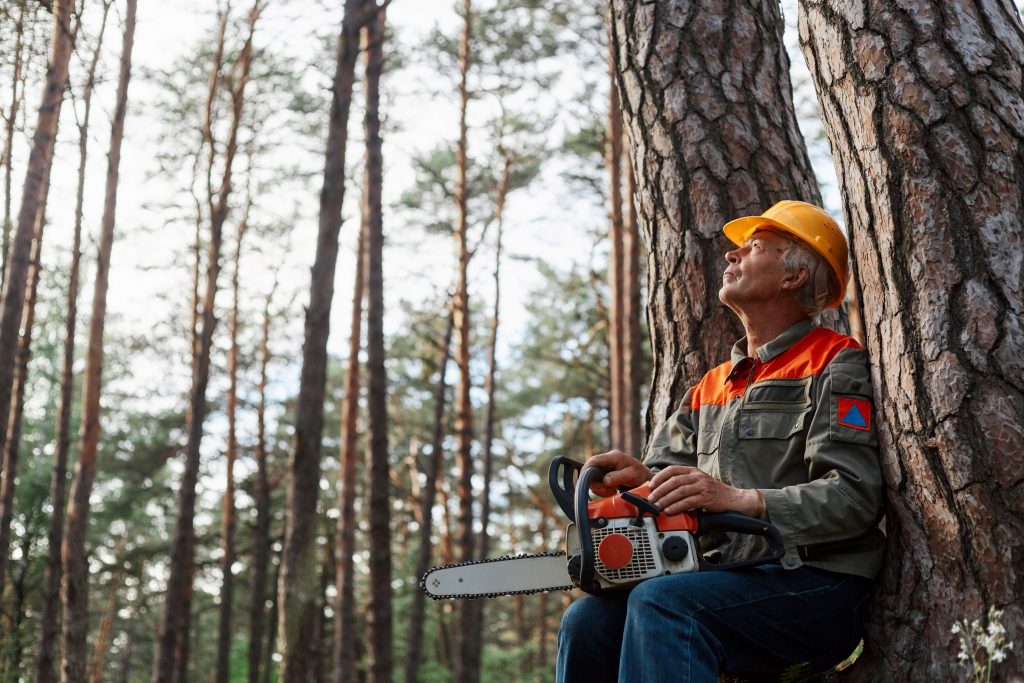
- Evaluate the tree: Determine the tree’s size, condition, and any potential weaknesses that may affect the removal process.
- Estimate the cost: Get quotes from reputable tree removal companies to determine the approximate cost of the project. Factors such as the tree’s location, height, and complexity of the job will influence the price.
- Obtain necessary permits: Check with your local authorities to see if permits are required for tree removal. This step will ensure that you comply with regulations and avoid any legal issues.
- Choose the right disposal option: Consider the different tree disposal options available, such as chipping, mulching, or hauling away the debris. Each option has its own benefits and costs, so choose the one that suits your needs.
- Hire a professional: Unless you have the necessary skills and equipment, it is recommended to hire a professional tree removal service. They have the expertise to safely remove the tree while minimizing any potential risks.
Goals
One of the goals of safely removing a large tree is to minimize any potential risks or hazards. By following proper techniques and procedures, you can ensure the safety of yourself and others while also reaping the benefits of tree removal. Here are some important goals to keep in mind:
| Goals for Safe Large Tree Removal |
|---|
| Minimize risks and hazards |
| Protect surrounding structures |
| Preserve the health of other trees and plants |
Minimizing risks and hazards is crucial to ensure a smooth tree removal process. This includes assessing the tree’s structural stability, using appropriate tools and equipment, and having a plan in place for any potential emergencies. Additionally, protecting surrounding structures such as buildings, fences, or power lines is essential to prevent any damage during the removal process.
Another important goal is to preserve the health of other trees and plants in the area. This can be achieved by carefully planning the tree removal process to minimize disturbance to the surrounding vegetation. Taking steps to prevent soil compaction and root damage can help maintain the overall health and balance of the ecosystem.
By keeping these goals in mind, you can ensure a safe and successful large tree removal while also enjoying the benefits it brings. Now, let’s explore some habits for safe large tree removal.
Transition: Now that you understand the goals of safe large tree removal, let’s delve into some habits that can help you achieve these goals effectively.
Habits for Safe Large Tree Removal
You can develop habits such as properly maintaining your tools and equipment to ensure safe and effective removal of large trees. When it comes to tree removal, having the right techniques and equipment is crucial for a successful job. First and foremost, always inspect your tools before each use. Make sure they are in good condition and functioning properly. This includes checking the sharpness of your chainsaw blades and the tension of your ropes and rigging equipment. Regularly cleaning and lubricating your tools will also help extend their lifespan and maintain their performance.
In addition to proper tool maintenance, it is important to use the right equipment for the job. For large tree removal, you will need heavy-duty chainsaws, rigging gear, and safety equipment such as helmets, gloves, and protective clothing. Investing in high-quality equipment will not only make the job easier but also ensure your safety throughout the process.
A Real-Life Story
Listen up, folks, because I’ve got a real-life story that will really drive home the importance of these practices. Picture this: a massive tree blocking the entrance to a residential neighborhood. It had to be removed, and the tree removal process was no easy task. The challenges faced were numerous, but with the right habits, the job was completed safely and efficiently.
First off, the tree’s precarious position made it difficult to access. The crew had to carefully maneuver around nearby structures and power lines. Then came the issue of the tree’s size. It towered above the surrounding buildings, making it a daunting task to bring it down without causing damage.
But here’s where the importance of following proper tree removal practices comes into play. The crew employed expert techniques to safely dismantle the tree, section by section. They used sturdy ropes and harnesses, ensuring their own safety as well as the protection of nearby property.
Now, let’s transition into the next section about quotes. It’s crucial to obtain multiple quotes from reputable tree removal companies. By doing so, you can compare prices, services, and expertise to ensure you’re making the best decision for your specific situation. So, let’s dive into the world of quotes and find the perfect company to tackle your tree removal needs.
Quotes
When searching for a tree removal company, it’s essential to gather multiple quotes from reputable providers to ensure you find the best option for your needs. Obtaining cost estimates and making price comparisons will give you a clear idea of what to expect and help you make an informed decision.
To start, reach out to several tree removal companies in your area. You can either call or visit their websites to request a quote. Be prepared to provide details about the size and location of the tree, as well as any additional services you may require, such as stump removal or debris cleanup. This information will help the companies give you accurate cost estimates.
Once you have gathered a few quotes, take the time to compare them. Look beyond the price and consider factors such as the company’s reputation, experience, and customer reviews. Keep in mind that the lowest price may not always be the best option. It’s important to find a balance between affordability and quality of service.
Secrets
Once you’ve obtained a few quotes and compared prices, it’s time to learn some secrets that will make the tree removal process easier. Let’s reveal these secrets to help you avoid any hidden costs. One secret is to inquire about additional services included in the price. Some tree removal companies may include stump grinding or debris removal, while others might charge extra for these services. Knowing what is included upfront will prevent any surprises later on.
Another secret is to ask about potential obstacles that may affect the cost. Factors such as the tree’s location, accessibility, and nearby structures can impact the overall price. For instance, if the tree is close to power lines or buildings, special equipment or permits may be required, adding to the cost. By understanding these potential obstacles, you can plan accordingly and budget for any additional fees.
Insights on Tree Removal Costs
To get a better understanding of the expenses involved, you should consider factors like the tree’s size, location, and any additional services required. When it comes to tree removal pricing, costs can vary depending on these factors. Larger trees generally require more labor and equipment, so they tend to be more expensive to remove. Additionally, the location of the tree is also a crucial factor. If the tree is difficult to access or close to buildings or power lines, the cost may increase due to the additional precautions and equipment needed to safely remove it.

However, there are cost-saving strategies that you can consider when it comes to tree removal. One option is to hire a professional arborist who can assess the tree and provide a detailed estimate. They may be able to provide recommendations on the most cost-effective way to remove the tree, such as cutting it down in sections rather than felling it all at once. Another strategy is to hire a company that offers bundled services, such as tree removal and stump grinding, as this can often result in a lower overall cost.
Understanding the factors that affect tree removal pricing and implementing cost-saving strategies can help you make an informed decision when it comes to removing a large tree. Now, let’s explore the benefits of large tree removal.
Benefits of Large Tree Removal
If you’re considering removing a big tree, you’ll be pleased to know that it can improve the safety and aesthetics of your property. The benefits of large tree removal go beyond just creating more space. One of the main advantages is the enhanced safety it provides. Overgrown trees can pose a significant risk, especially during storms or high winds. By removing them, you reduce the chances of falling branches or even the entire tree causing damage to your property or injuring someone. Additionally, removing a large tree can improve the overall aesthetics of your property. It allows more sunlight to reach your yard, promoting the growth of other plants and improving the curb appeal. However, it’s important to consider the cost factors associated with large tree removal. Factors such as the size of the tree, accessibility, and any additional services required, like stump removal, can influence the cost. By understanding these factors and obtaining multiple quotes from professional arborists, you can make an informed decision and ensure that you get the best value for your money. Removing a large tree is a significant decision that requires careful consideration, but the benefits it brings to your property make it a worthwhile investment.
When it comes to large tree removal, there are some important lessons to learn.
Lessons
When it comes to large tree removal, there are several important factors to consider. First, understanding the cost factors involved is crucial in making an informed decision. Next, you’ll want to weigh the pros and cons of DIY vs hiring a professional to ensure the job is done safely and efficiently. Lastly, it’s important to consider the environmental impact of removing a large tree and explore alternative options if possible.
Cost Factors Explained
The cost of removing a large tree can vary based on several factors. To give you a cost breakdown, it’s important to consider the size, location, and complexity of the tree removal job. Pricing variations also come into play, as different tree removal companies may have different rates and pricing structures. Factors such as tree height, diameter, and condition can affect the overall cost. Additionally, the accessibility of the tree and any potential hazards nearby can impact the price. It’s crucial to get multiple quotes from reputable tree removal professionals to ensure you’re getting a fair price. With these cost factors explained, let’s now transition into the subsequent section about the DIY approach versus hiring a professional for tree removal.
DIY Vs Professional
Let’s compare the benefits of doing it yourself versus hiring a professional for tree removal. When it comes to DIY vs professional, there are a few factors to consider. First and foremost is the cost comparison. While doing it yourself may seem like a cost-effective option, there are hidden expenses to consider. Renting or buying equipment, obtaining permits, and potential property damage can quickly add up. On the other hand, hiring a professional ensures that the job is done safely and efficiently. Professionals have the necessary expertise, experience, and equipment to handle tree removals of all sizes. Additionally, they are insured, providing you with peace of mind. Transitioning into the environmental impact considerations, it’s important to note that tree removal can have ecological consequences that professionals are trained to mitigate.
Environmental Impact Considerations
Consider the potential ecological consequences of removing a tree and how professionals can help mitigate them. When it comes to tree removal, it is crucial to understand the environmental impact it may have. Trees play a vital role in our ecosystem, providing oxygen, absorbing carbon dioxide, and sheltering wildlife. Removing a tree disrupts this delicate balance and can result in negative effects on the environment. Professionals trained in tree removal techniques can help minimize these consequences. They have the knowledge and equipment to safely remove a tree without causing further damage to the surrounding environment. Additionally, they can implement proper disposal methods for the tree debris, reducing the impact on landfills. While hiring professionals may incur some cost considerations, it is a worthwhile investment in preserving our environment. Moving on to routines {yt}, let’s explore the step-by-step process of tree removal.
Routines
Do you have a set routine for your daily tasks and responsibilities? When it comes to large tree removal, having a routine and following certain habits is crucial for a safe and successful outcome. To ensure a smooth process, there are some common mistakes to avoid and important dos and don’ts to keep in mind. Safety precautions during tree removal are of utmost importance, so it’s essential to have the right equipment on hand.
When undertaking the task of removing a large tree, there are specific action steps you should follow. First, assess the tree and its surroundings to identify potential hazards and plan the safest approach. Next, gather the necessary equipment, such as chainsaws, ropes, and safety gear, to ensure a smooth and secure removal process. Before starting any cutting, make sure to clear the area and establish a safe zone for workers. It’s also important to have a plan for disposing of the tree debris properly.
Pros and Cons
There are definite advantages and disadvantages to removing a tree from your property. Let’s start with the pros. One benefit is improved safety. Trees that are diseased, damaged, or leaning dangerously can pose a risk to your home and family. Removing them eliminates this hazard. Another advantage is increased sunlight. If a tree is blocking sunlight from reaching certain areas of your property, removing it can help your plants, grass, and even solar panels thrive. Additionally, tree removal can enhance your property’s aesthetics. Removing an unsightly or overgrown tree can improve the overall look and appeal of your landscape.
However, there are also drawbacks to consider. One major drawback is the cost. Tree removal can be expensive, especially if the tree is large and requires specialized equipment. Another disadvantage is the potential impact on the environment. Trees provide numerous ecological benefits, such as oxygen production and carbon dioxide absorption. Removing them can disrupt the natural balance and reduce biodiversity in your area.
In conclusion, while tree removal has its benefits, such as improved safety, increased sunlight, and enhanced aesthetics, it also comes with drawbacks, including the cost and environmental impact. It’s important to carefully weigh these pros and cons before making a decision about removing a tree from your property.
Now, let’s move on to the dos and don’ts when it comes to tree removal.
Dos and Dont’s
Before starting any tree removal project, it’s crucial to familiarize yourself with the dos and don’ts to ensure a safe and successful outcome. Here are some important safety precautions to keep in mind:
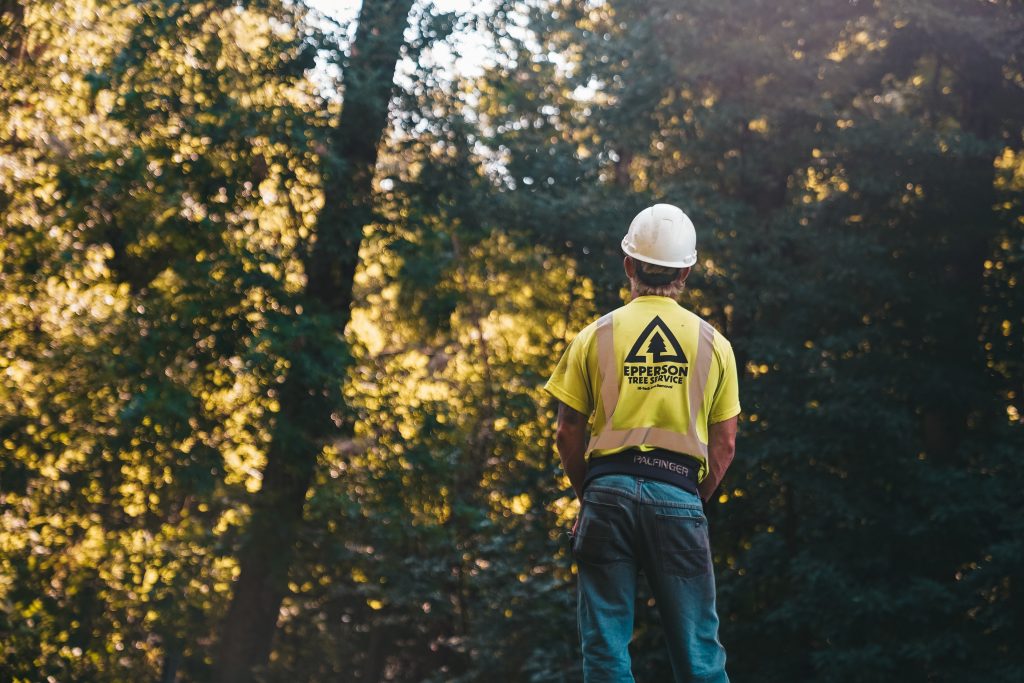
| Dos | Don’ts |
|---|---|
| Wear appropriate safety gear, such as gloves, goggles, and a hard hat. | Don’t attempt to remove a tree without proper training or experience. |
| Inspect the tree for any signs of decay or structural instability. | Don’t forget to check for any electrical wires or obstacles near the tree. |
| Plan the felling direction and make sure there is enough space for the tree to fall safely. | Don’t stand directly in the line of the falling tree or near the stump. |
| Use proper cutting techniques, such as making a notch and a backcut, to control the tree’s direction of fall. | Don’t use improper tools or equipment that may compromise your safety. |
Mistakes to Avoid
Now that you know the dos and don’ts of tree removal, let’s talk about some common mistakes that people often make. Avoiding these errors will not only save you time and money but also ensure the safety of everyone involved.
One of the most common mistakes is underestimating the size and weight of the tree. Large trees can be deceptively heavy, and if you don’t have the right equipment or expertise, removing them can be dangerous. Hiring a professional tree removal service is crucial to ensure the job is done safely and efficiently.
Another mistake is not obtaining the necessary permits or permissions. Cutting down a tree without the proper authorization can lead to legal issues and fines. It’s important to check with your local authorities or homeowners association before proceeding with any tree removal.
Improper cutting techniques can also cause problems. Cutting the tree too close to the ground can make it difficult to remove the stump later on. It’s essential to leave enough trunk for the professionals to work with.
Key Takeaways
To summarize, remember to hire a professional for the job, obtain necessary permits, and be mindful of proper cutting techniques when removing a tree. When it comes to large tree removal, there are a few cost saving tips you can keep in mind. First, consider getting multiple quotes from different tree service companies to ensure you’re getting the best price. Additionally, you can save money by keeping the wood from the tree for firewood or selling it. This not only reduces waste but also gives you an opportunity to recoup some of the cost.
It’s also important to consider the environmental impact of tree removal. Trees play a crucial role in our ecosystem, so it’s essential to replace them whenever possible. Consider planting new trees in the same area or supporting local reforestation programs. By taking these actions, you can help offset the environmental impact of tree removal.
With these cost saving tips and environmental considerations in mind, you can proceed with the specific action steps for large tree removal. These steps will ensure a smooth and efficient process while minimizing any potential risks or damage.
Specific Action Steps for Large Tree Removal
When it comes to large tree removal, it is crucial to prioritize safety precautions during the entire process. This includes wearing protective gear such as gloves, goggles, and helmets, as well as ensuring that the work area is clear of people and obstacles. In terms of equipment needed, you will typically require a chainsaw, ropes, harnesses, and possibly a wood chipper, depending on the size of the tree. While some may attempt a DIY approach, it is important to consider the expertise and experience of professional arborists who are trained to handle large tree removal safely and efficiently.
Safety Precautions During
Make sure you’re wearing protective gear while performing a large tree removal to ensure your safety. When it comes to tree removal, having the right equipment is crucial. First, you’ll need a chainsaw, preferably one with a long bar length to handle large trees. Additionally, a ladder or climbing gear is necessary for accessing higher branches safely. Consider using a rope and harness system to secure yourself while working at heights. If the tree is near structures or power lines, it’s essential to have a pole saw or pole pruner to remove branches without causing damage. To safely fell the tree, you may need wedges, a felling lever, and a winch for precise control. Remember, proper technique is just as important as having the right equipment. Ensure you’re knowledgeable about tree removal techniques to avoid accidents. Now that you know the importance of safety and techniques, let’s discuss the equipment needed for a successful large tree removal.
Equipment Needed for
Now that you understand the safety precautions involved in large tree removal, it’s important to know about the equipment needed for the job. Tree removal requires specialized equipment to ensure efficiency and safety. Some of the essential tools include chainsaws, wood chippers, cranes, and ropes. Chainsaws are used to cut through the trunk and branches, while wood chippers are used to dispose of the cut pieces. Cranes are often necessary to lift heavy limbs or even the entire tree, especially in difficult-to-reach areas. The cost breakdown for tree removal equipment varies depending on the size and complexity of the job. Renting the necessary equipment could cost anywhere from $200 to $1000 per day, while hiring a professional tree removal service typically includes the cost of equipment in their overall quote. Speaking of professionals, let’s now explore the advantages and disadvantages of hiring professionals versus doing it yourself.
Professional Vs DIY
Hiring professionals for the job has its advantages and disadvantages. When it comes to tree removal, there are a few things to consider before deciding whether to tackle the task yourself or hire a professional. Let’s start with the cost comparison. DIY tree removal may seem like a more cost-effective option at first, but it’s important to factor in the equipment and tools you’ll need to purchase or rent. Professionals already have the necessary equipment, which can save you money in the long run. Additionally, hiring professionals ensures that the job is done safely and efficiently. They have the expertise and experience to handle any potential risks or complications that may arise. However, it’s worth noting that DIY tree removal can be a fulfilling project for those who have the necessary knowledge and skills. Ultimately, the choice between DIY and hiring professionals depends on your comfort level, budget, and the complexity of the job.
Frequently Asked Questions
Can I Remove a Large Tree on My Own Without Any Professional Help?
Removing a large tree on your own without professional help can be risky and dangerous. It’s recommended to hire professional tree removal services due to the complexity and potential hazards involved.
How Long Does It Typically Take to Remove a Large Tree?
To safely remove a large tree, it’s important to follow best practices. The time it takes to remove a tree depends on various factors like size and complexity. Hiring professionals ensures a safe and efficient process.
What Permits or Permissions Are Required to Remove a Large Tree?
To remove a large tree, you’ll need permits and permissions. These ensure compliance with local regulations and assess the environmental impact. Contact your local authorities or consult an arborist for specific requirements in your area.
Are There Any Alternatives to Completely Removing a Large Tree?
If you’re looking to preserve or relocate a large tree, there are alternatives to complete removal. Tree preservation techniques can help protect the tree’s health, while tree relocation services can move it to a new location.
What Factors Can Affect the Cost of Removing a Large Tree?
Factors such as size, location, and complexity can significantly impact the cost of removing a large tree. It is crucial to seek professional help for this task to ensure safety and avoid potential damage.
About Murray, Utah
Murray is a city situated on the Wasatch Front in the core of Salt Lake Valley in the U.S. state of Utah. Named for territorial governor Eli Murray, it is the state's fourteenth largest city. According to the 2020 census, Murray had a population of 50,637. Murray shares borders with Taylorsville, Holladay, South Salt Lake and West Jordan, Utah. Once teeming with heavy industry, Murray's industrial sector now has little trace and has been replaced by major mercantile sectors. Known for its central location in Salt Lake County, Murray has been called the Hub of Salt Lake County. Unlike most of its neighboring communities, Murray operates its own police, fire, power, water, library, and parks and recreation departments and has its own school district. While maintaining many of its own services, Murray has one of the lowest city tax rates in the state.
Neighborhoods in Murray, Utah
Murray Oakes, Grant Park, Southwood Park, Murray Park, Murray Park Restrooms, Willow Pond Park, Neighborhood Veterinary Care
Things To Do in Murray, Utah
Bus Stops in Murray, Utah to Truco Services, Inc.
Bus Stop in Murray Central Station (Bay C) Murray, Utah to Truco Services, Inc.
Bus Stop in State St @ 4801 S Murray, Utah to Truco Services, Inc.
Bus Stop in Murray North Station Murray, Utah to Truco Services, Inc.
Bus Stop in State St @ 4949 S Murray, Utah to Truco Services, Inc.
Bus Stop in Murray Central Frontrunner/Trax Station Murray, Utah to Truco Services, Inc.
Bus Stop in Murray Blvd / Vine St (SB) Murray, Utah to Truco Services, Inc.
Bus Stop in State St @ 3925 S Murray, Utah to Truco Services, Inc.
Bus Stop in State St @ 4824 S Murray, Utah to Truco Services, Inc.
Bus Stop in State St @ 5223 S Murray, Utah to Truco Services, Inc.
Bus Stop in Murray Blvd / Allendale Dr (NB) Murray, Utah to Truco Services, Inc.
Bus Stop in Murray Blvd @ 5039 S Murray, Utah to Truco Services, Inc.
Bus Stop in State St @ 4721 S Murray, Utah to Truco Services, Inc.
Driving Directions in Murray, Utah to Truco Services, Inc.
Driving Directions from Woodruff Tree Trimming and Removal to 4640 Commerce Dr, Murray, UT 84107, USA
Driving Directions from Reliable Tree Care to 4640 Commerce Dr, Murray, UT 84107, USA
Driving Directions from Tree Pro-Tech to 4640 Commerce Dr, Murray, UT 84107, USA
Driving Directions from Prestige Tree And Landscape to 4640 Commerce Dr, Murray, UT 84107, USA
Driving Directions from Excellence Tree & Landscape to 4640 Commerce Dr, Murray, UT 84107, USA
Driving Directions from Amen Trees to 4640 Commerce Dr, Murray, UT 84107, USA
Driving Directions from Tim's Tree Care to 4640 Commerce Dr, Murray, UT 84107, USA
Driving Directions from Jordan Tree Service - Murray to 4640 Commerce Dr, Murray, UT 84107, USA
Driving Directions from Arbor Works to 4640 Commerce Dr, Murray, UT 84107, USA
Driving Directions from Diamond Tree Experts to 4640 Commerce Dr, Murray, UT 84107, USA
Driving Directions from Green Tree Arborist to 4640 Commerce Dr, Murray, UT 84107, USA
Driving Directions from TruCo Services to 4640 Commerce Dr, Murray, UT 84107, USA
Reviews for Truco Services, Inc. Murray, Utah
Emily Abercrombie
We had a great experience with TruCo! They were well priced, responsive and prompt. Michael was a pleasure to work with and gave us advice on which plants to put in where we took out our ugly old shrubs. I would highly recommend this company!!!
Michelle Turpin
TruCo Services gets 5 stars from us for customer service. We experienced a few issues with their services this last year and Rob Eccles in senior management, stepped in and immediately handled our issues. He was very committed to making sure they understood our expectations and would execute to make us happy.
Siobhan Billingsley
I work for a property management company and have the pleasure of working with Rob at a community in Sandy. He has been incredible to work with and always responds in a timely manner. He knows all the homeowners by name and address and is aware of all the "problem" areas when it comes to sprinklers. I never have to worry about following up with him because he always reaches out to provide me with an update. If you're looking to work with someone who takes pride in their job, is professional, and can solve the worst landscaping problems thrown your way, Rob is your guy. Thank you, Rob for all you do!
Jaime S.
We have used Truco at 2 of the complexes we manage, they have been great to work with. Good quality service, outstanding customer service with good communication. That's hard to find these days. I highly recommend them. Travis has been awesome to work with.
Jerusha Smart
We use TruCo for a majority of our properties and our home. While other landscaping companies we use come and go for various reasons like cost, communication issues, work performance, etc., TruCo is always consistent in price and work. Also, Rob is the best.
